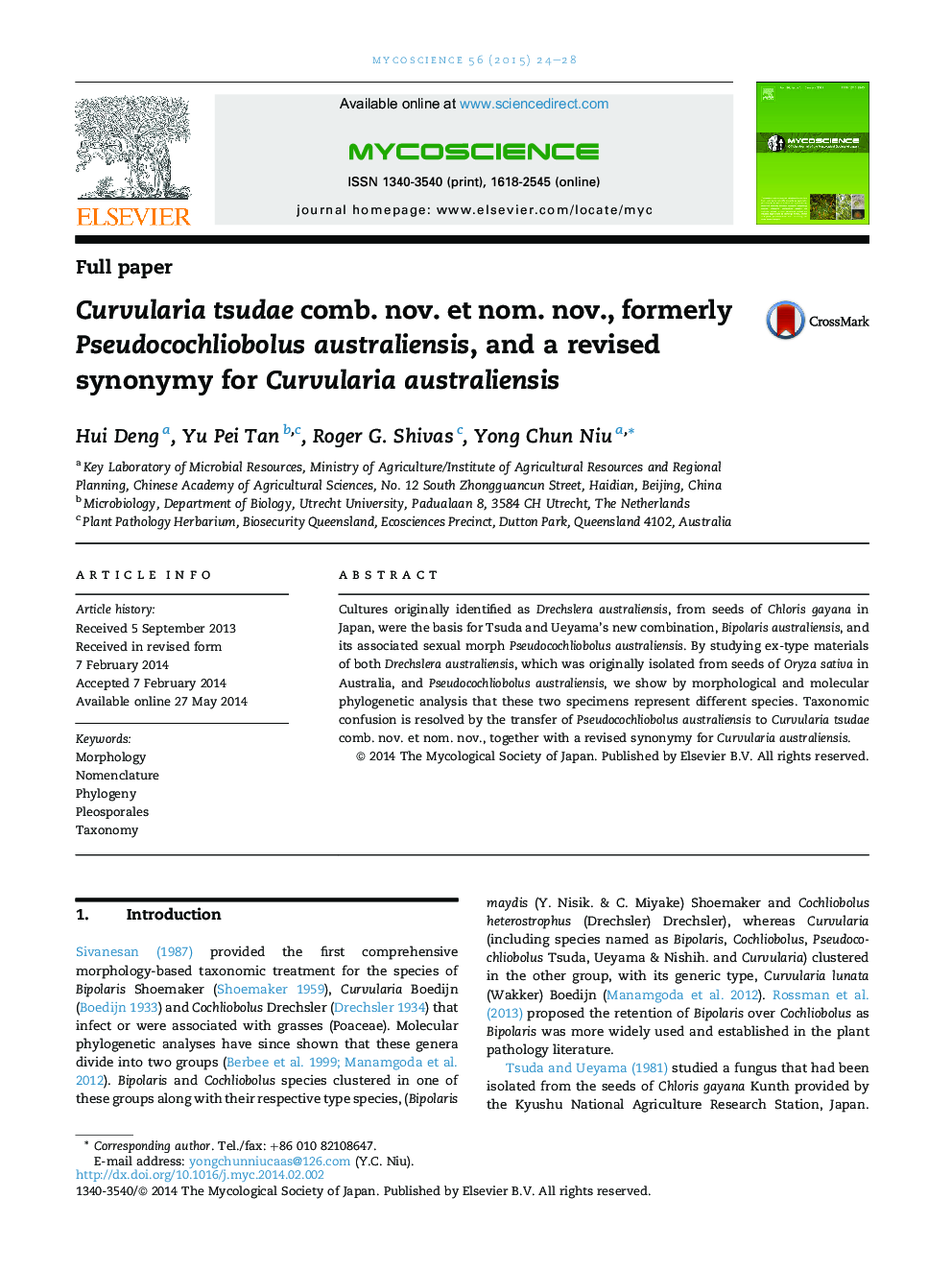| Article ID | Journal | Published Year | Pages | File Type |
|---|---|---|---|---|
| 2060213 | Mycoscience | 2015 | 5 Pages |
•Drechslera australiensis and Pseudocochliobolus australiensis represent different species.•Pseudocochliobolus australiensis was transferred to Curvularia tsudae comb. nov. et nom. nov.•A revised synonymy for Curvularia australiensis was also showed.•We show the result by molecular phylogenetic analysis of the ex-type material.•All types of anamorphic/teleomorphic fungi warrant re-examination.
Cultures originally identified as Drechslera australiensis, from seeds of Chloris gayana in Japan, were the basis for Tsuda and Ueyama's new combination, Bipolaris australiensis, and its associated sexual morph Pseudocochliobolus australiensis. By studying ex-type materials of both Drechslera australiensis, which was originally isolated from seeds of Oryza sativa in Australia, and Pseudocochliobolus australiensis, we show by morphological and molecular phylogenetic analysis that these two specimens represent different species. Taxonomic confusion is resolved by the transfer of Pseudocochliobolus australiensis to Curvularia tsudae comb. nov. et nom. nov., together with a revised synonymy for Curvularia australiensis.
